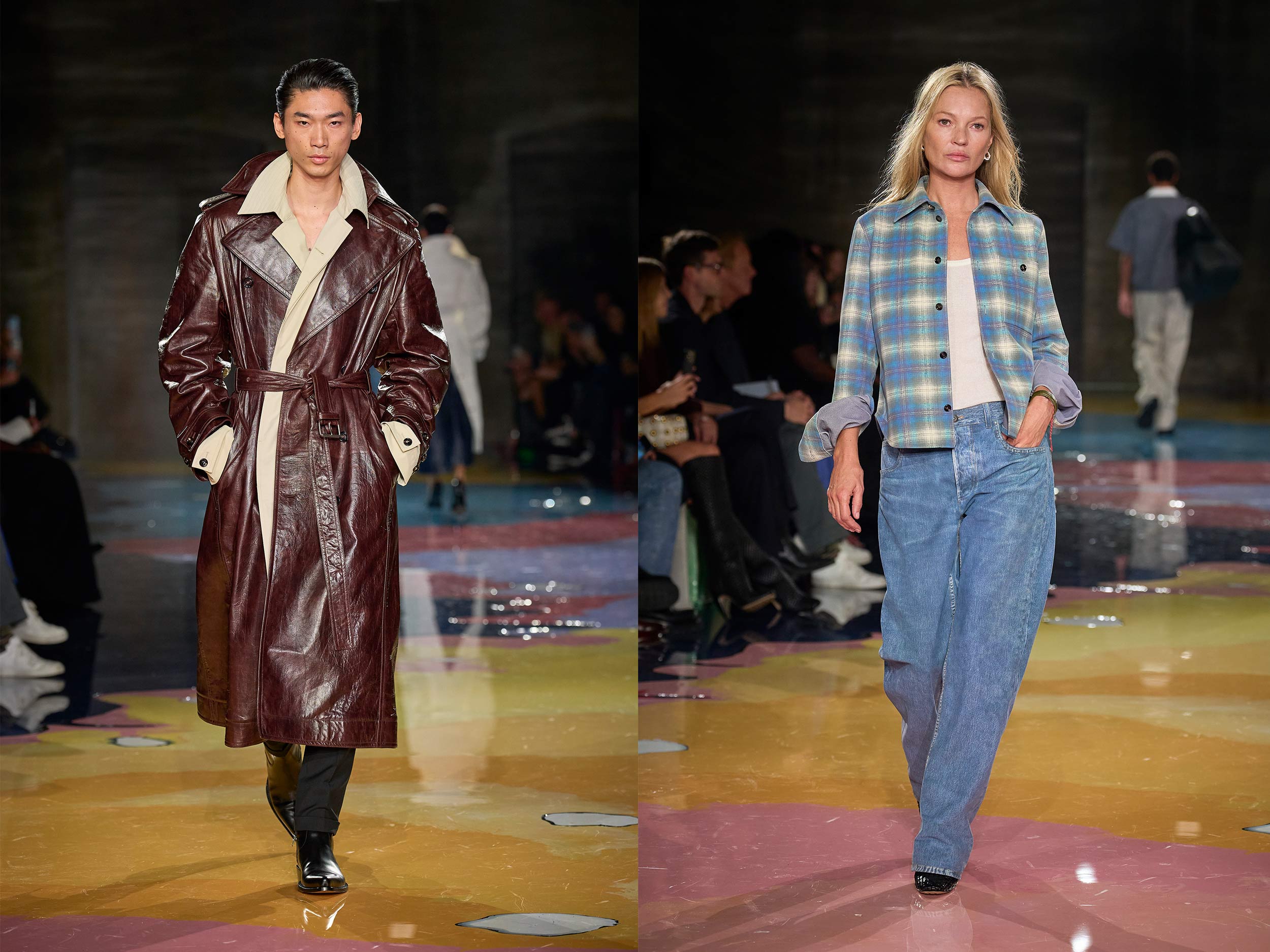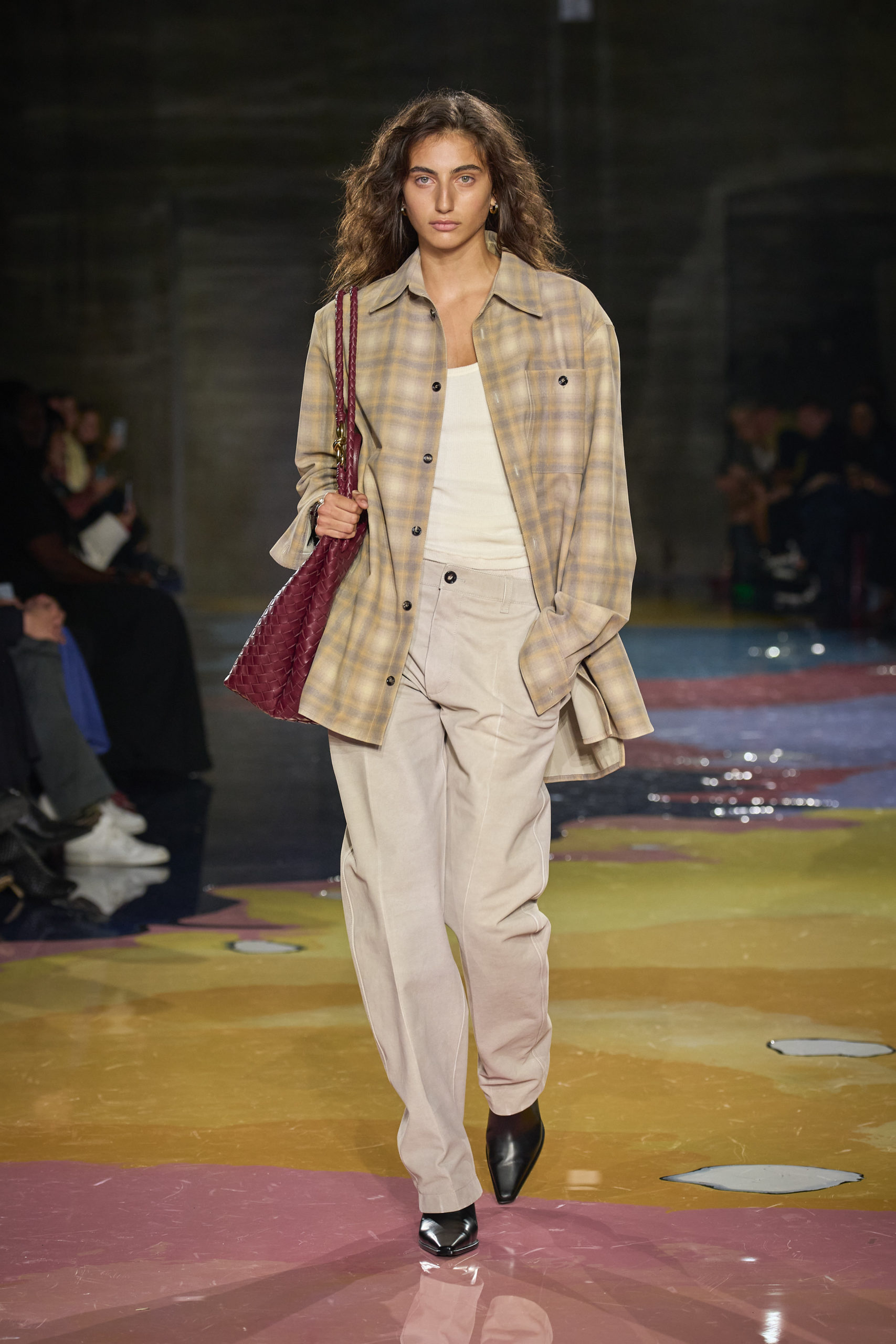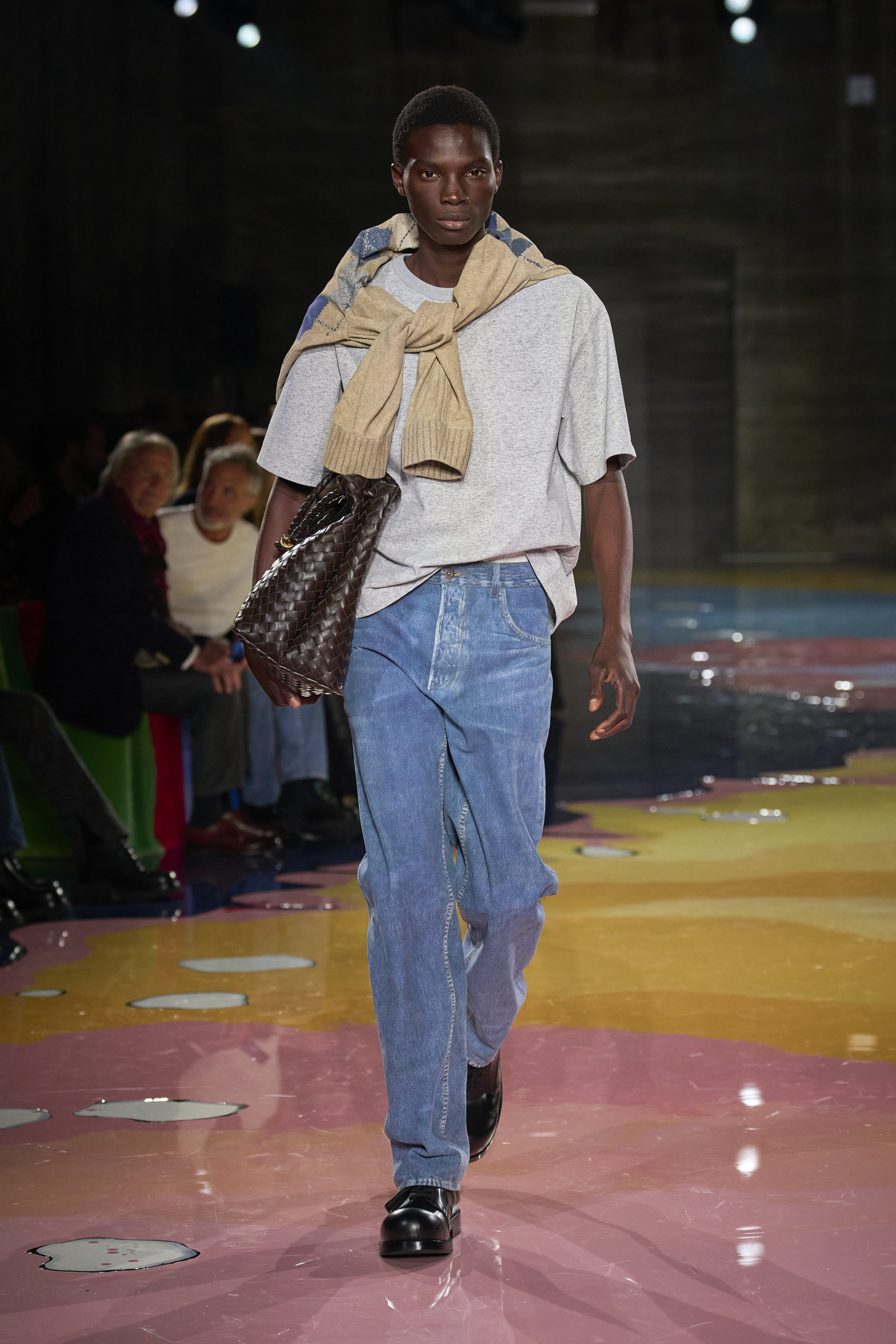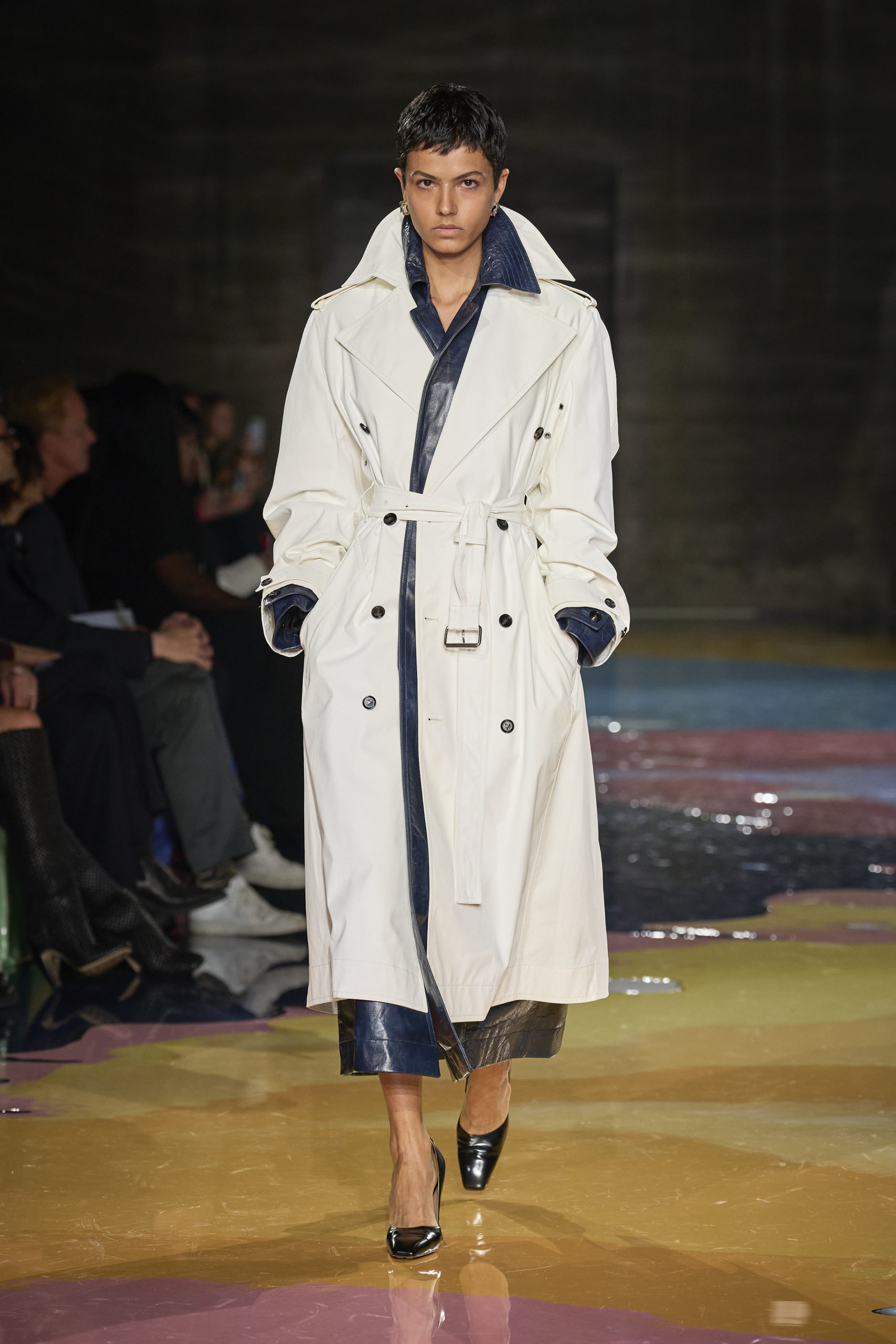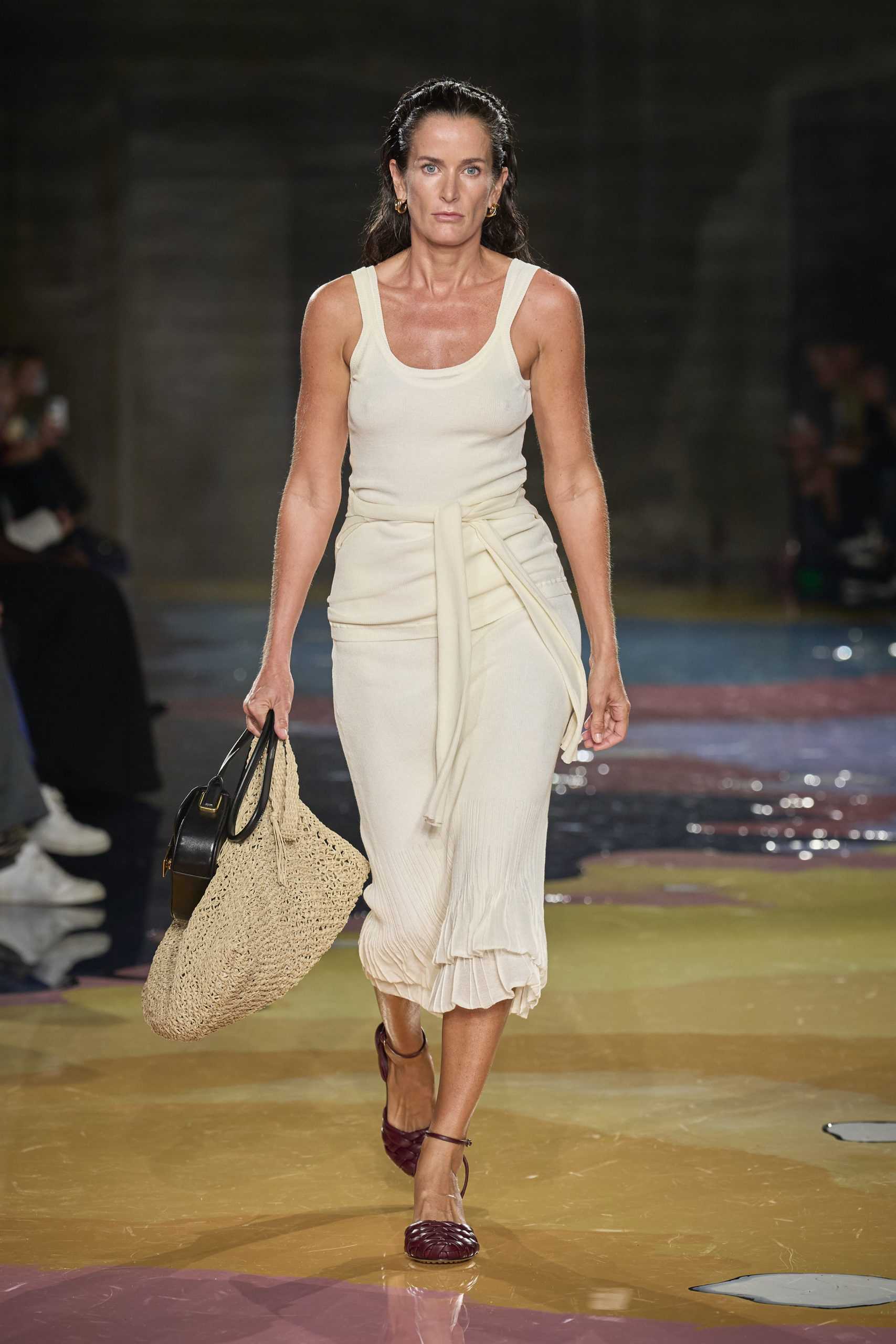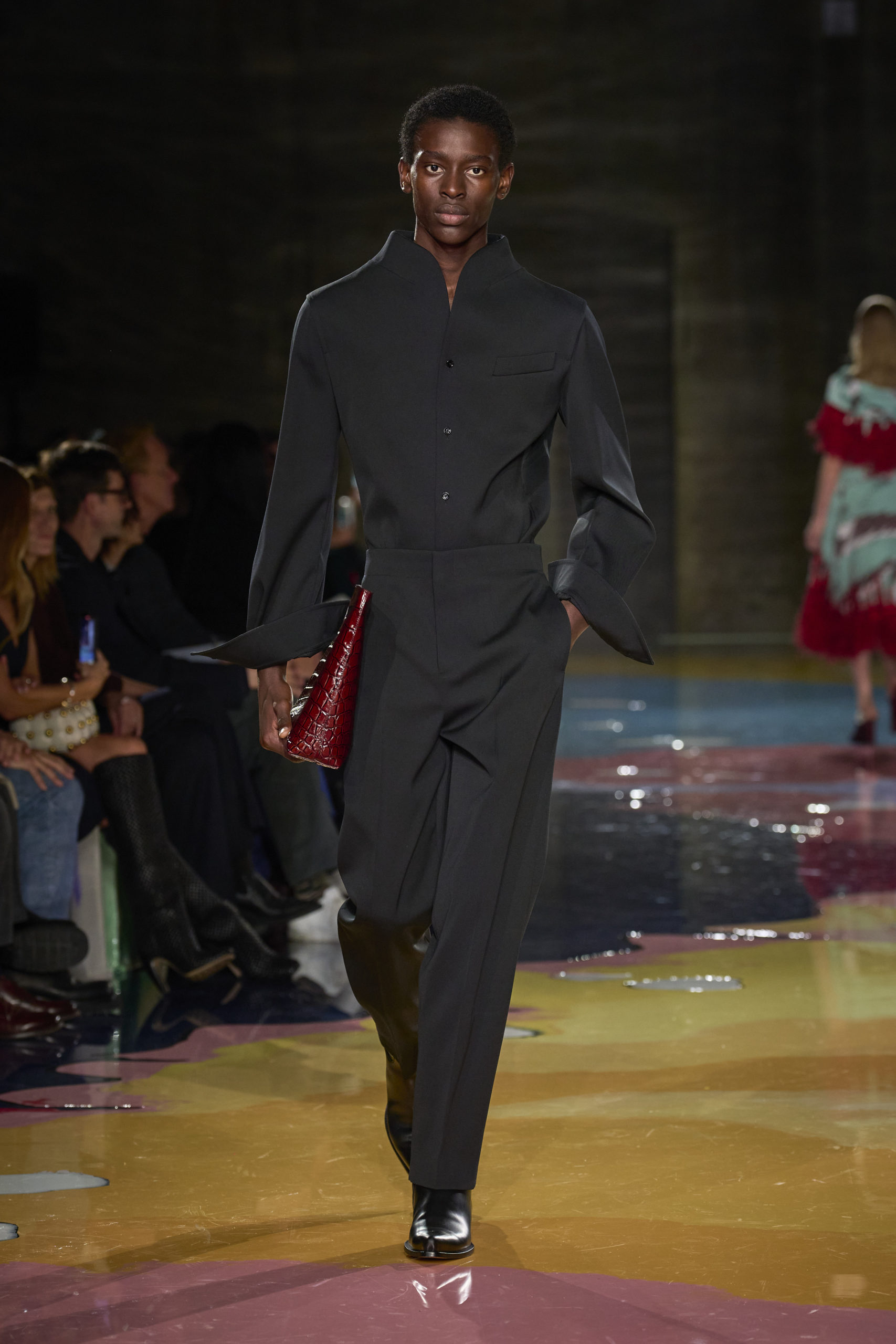In Matthieu Blazy’s latest collection, the extraneous turned essential, and the expendable turned reusable
This past Saturday, 400 guests sat on the border of a resin-mottled runway, designed by New York-based Italian architect and urban planner Gaetano Pesce, at Matthieu Blazy’s highly-anticipated Bottega Veneta Spring/Summer 2023 presentation.
The show began with an echoing guitar chord, guided by a wandering, whistled melody—a tune reminiscent of an unnamed vagabond meandering into untouched territory. It almost assuaged my fear of venturing into Bottega’s storefronts.
The first look revealed the dreamscape to be a sidewalk: A model strolled onto the runway wearing a white shirt layered over a neutral-toned flannel, paired with beige, loose-fitting trousers, black pointed-toe boots, and a cranberry-colored, woven shoulder bag. Her hair was unleashed and windswept; it looked like she’d been walking all day. Has Bottega tapped into norm-core? Sure, but it’s much more complex than that.
As the moony tune wandered on, blips of fleeting conversations roamed over the soundtrack, landing alongside the models. The initial outfits followed a seemingly unobtrusive path of what seemed to be technically perfected plaid shirts, jeans, and cotton tees. There’s no doubt that practical wearability was a theme, but what came as a surprise was that every piece was actually made out of leather, mimicking various fabrics—in other words, practical wearability was imitated, maybe even mocked.
An isolated voice marked an abrupt transition point in the show: “Okay, just keep on walking down the street,” an anonymous lady asserted over the speakers—a statement that was privy to Blazy’s cerebral and ironic take on fashion: It’s not a street, it’s a runway, and it’s not a flannel, it’s a leather button-down. A suspenseful anthem of synthesizers and electronic keys took form as another model jaunted down the runway, wearing a white tee, denim-like pencil skirt, and a lofty fur coat.
A fur coat in a Spring/Summer collection was not the only peculiar detail, as the purse worn with it mimicked the qualities of a quintessential brown paper shopping bag—a ubiquitous staple and basic side-car to the everyday purse. Here, Blazy transmogrified the brown paper bag: extraneous turned essential, expendable turned reusable.
Blazy furthered this impersonation by pairing the bag with a classic, crossbody mini-bag. He further imitated the flexible silhouette of a canvas bag, again pairing it with the rigidly constructed minibag—a juxtaposition of accessories native to those who spend much of their time commuting.
This multibag motif refers to a nomadic subjectivity—of a person going from job to job, place to place within a given day. This continual geographical metamorphosis is canonized through Blazy’s interpretation of the handkerchief—an item that is transient and modular by nature, and seemed to inspire a diverse selection of garments and accessories. At times, it was tied onto the backs of outfits and worn as a windy tail. Other times, its silhouette was enlarged and materialized in the form of a leather shoulder bag.
In folklore, the trope of the handkerchief tied to the end of a stick and slung over the shoulder is essential to tales of the vagabond. Bottega reimagined the erect stick and handkerchief combo, rendering it into a limp, woven leather rope and knapsack, slung over the shoulder of the models. To accentuate this, Blazy interpreted the stick as a metallic handle for a select few leather-woven mini-bags.
With this collection, Blazy views fashion in a more ecological way: as a collection of stories, and as paraphernalia of a journey to and from destinations. He embellished the urban zeitgeist and demonstrated that those who wear many bags exist in the same paradigm as those who wear many hats—who carry all of their possessions in shopping bags and transport them around by hand, collecting everyday keepsakes of being and doing.


